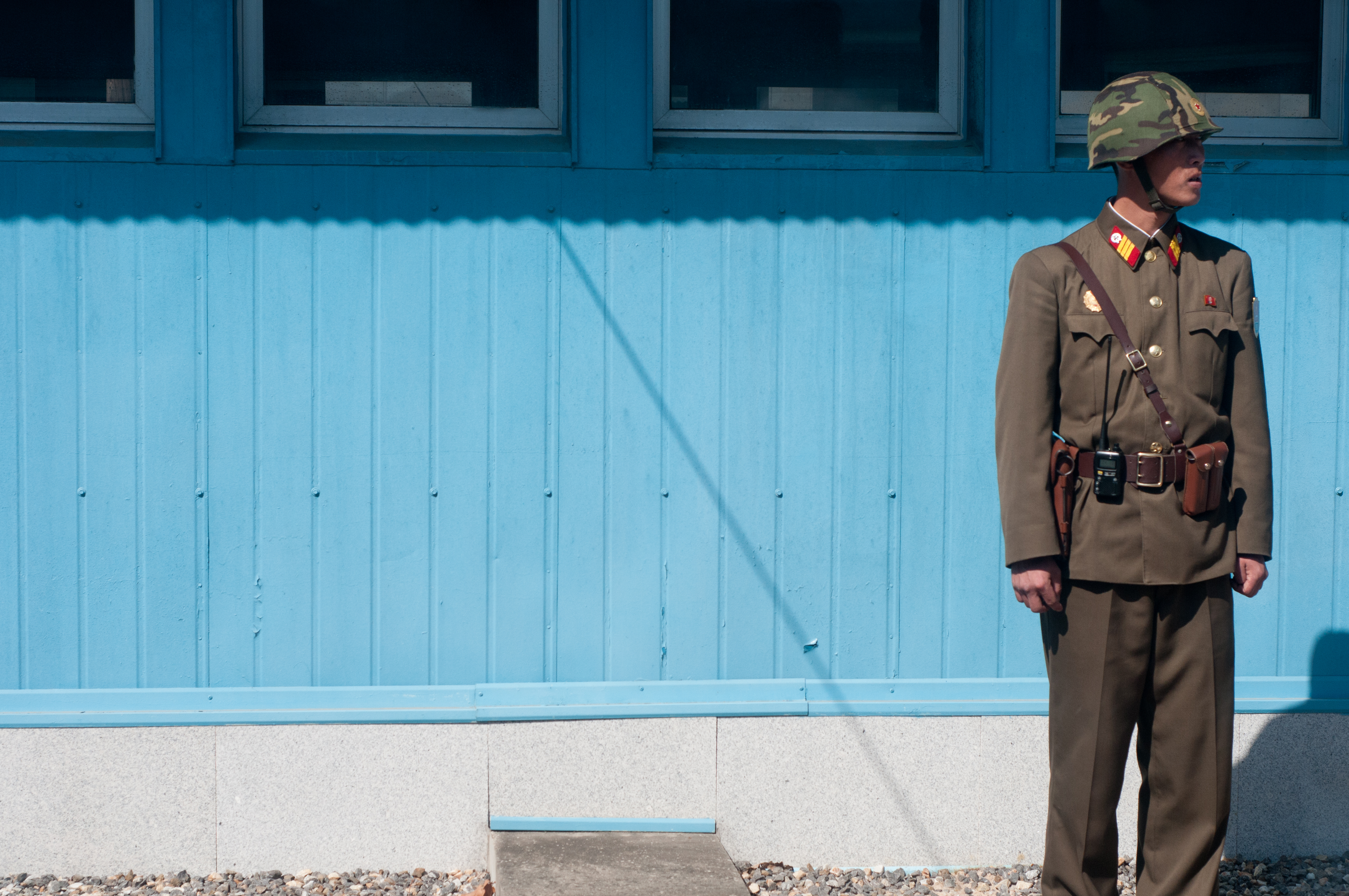
Getting the Price Right: The End of the War Declaration and North Korea’s Missile Tests
Commentary | November 02, 2021
Youngshik Bong
Research Fellow at the Yonsei University Institute for North Korean Studies
With his presidential term set to end in 2022, Moon Jae-in has engaged in his final push for peace on the Korean peninsula – Moon called for an end of the Korean War in his address at the United Nations General Assembly. In this commentary, Youngshik Bong, Research Fellow at the Yonsei University Institute for North Korean Studies, explains the implication of the end-of-war declaration, discusses what leverage South Korea has over related parties, and suggests courses of action for the Korean government. Dr. Bong states that the proposal will have a fighting chance for related parties only when it is seen as something that will help deliver substantial and verifiable benefits to them. On North Korea’s response, he states that it will have to dial down the military tension between the Koreas. In other words, the proposal must be substantial rather than symbolic.
The Proposal That Was Met by Missile Tests
On September 21, 2021, South Korean President Moon Jae-in proposed a trilateral or quadrilateral declaration of a formal end to the Korean War in his address at the 76th session of the United Nations General Assembly. It was the third time President Moon called for an end-of-war declaration in his UN speech in the past four years and it is regarded to be his final attempt with the proposal as his presidential term is set to expire in May 2022.
Since President Moon proposed the idea of a joint declaration, the South Korean government has aggressively tried to persuade the related parties including the U.S., China, and North Korea to accept the proposal. However, none of the related parties have yet shown strong support for the proposal. Pyongyang expressed conditional support for the idea in two official statements. Vice Foreign Minister Ri Thae Song said the proposal was “something premature” without “the withdrawal of the hostile policy toward the DPRK, under the present situation on the peninsula inching close to a touch-and-go situation.” Kim Yo Jong, Vice Department Director of the Central Committee of the Workers’ Party of Korea issued a statement on September 24th in which she said “[T]here is nothing wrong in the declaration of the termination of the war itself” but South Korea and the U.S. first need to get rid of “double-dealing standards, prejudice, and hostile policies toward the DPRK and speeches and acts antagonizing” Pyongyang.
North Korea has not yet explained to South Korea what the preconditions for it to accept the proposal are in any specific manner. Instead, the North has test-fired a variety of missiles in the span of two months since the UN speech was delivered. The Korean Central News Agency (KCNA) announced on September 13, 2021 that the Academy of National Defense Science of the Democratic People’s Republic of Korea successfully test-fired the newly-developed new type long-range cruise missile on September 11th and 12th. The North Korean military also conducted a ballistic missiles test (KN-30), which was designed to prepare a railway-borne missile regiment to increase the capability of dealing with an intensive multi-concurrent blow at forces posing threats. On October 19th, the North launched the August 24 “Hero” submarine-launched ballistic missiles, which were estimated to fly approximately 590km in the high altitude of 60km.
In the meantime, the Chinese government has not expressed any clear opinion about the proposal by South Korea. The Xi government’s silence must be disappointing to the Moon government of South Korea as the latest UN speech, unlike the previous two speeches by President Moon, specifically mentioned China as one of the related parties in the possible declaration.
The Biden administration’s reactions have also been lukewarm and cautious. Sung Kim, Special Representative of North Korean Affairs for the Biden administration, has acknowledged that he and his ROK counterpart Special Representative Noh Kyu-duk “discussed the ROK’s end of war proposal” and said he looked forward to “continuing those discussions.” Yet Kim also emphasized that the Biden administration would continue to advocate for human rights in North Korea and call for an immediate resolution of the abduction issue. He pointed out the North’s missile tests are in violation of the UNSC resolutions on North Korea and pose threats to the security of the Korean Peninsula. On October 26th, Jake Sullivan, the National Security Advisor at the White House, commented on the proposal that “[W]e may have somewhat different perspectives on the precise sequence or timing or conditions for different steps.”
Making the Proposal Count
Considering these responses from the related parties of the end-of-war declaration, one may well conclude that pushing the proposal is like beating a dead horse. Such a skeptic view appears to be an accurate observation of the current situation surrounding the proposal. However, there are ways to increase the probability of the proposal being endorsed by the related parties. Everything under the Sun has its price. If Seoul can get the price of the proposal correct for the related parties (or prices, since this involves more than one country), then the declaration can be negotiated and agreed on.
The Moon government must make the proposal substantial to the related parties. The irony of the end-of-war proposal is that it is not legally binding. The Moon administration has tried to persuade the related parties by stressing this aspect of the proposal, but this is counterproductive in making the proposal attractive to them. The Moon government has explained the proposal as low-risk and symbolic; therefore, the countries have nothing to lose. However, the fact that the proposal is symbolic and non-binding does not make it more acceptable. It only keeps the related parties uninterested. Why bother considering the proposal if accepting it will not produce important outcomes?
In his UN speech, President Moon said that “[When] the parties involved in the Korean War stand together and proclaim an end to the war, I believe we can make irreversible progress in denuclearization and usher in an era of complete peace.” This statement shows that the Moon government regards the joint declaration as an ‘entrance’ to the denuclearization of the Korean Peninsula and the construction of a sustainable peace regime. However, Seoul has failed to show clearly and convincingly how this ‘entrance approach’ will work. Beijing asks how the entrance will guarantee the formal conclusion of the Korean War. Washington asks how the entrance will result in the complete, irreversible and verifiable denuclearization of North Korea. Neither Seoul nor Pyongyang has provided any clear answer.
North Korea used to have some interest in the proposal of the joint declaration when it was proposed at the 2007 inter-Korean summit meeting between President Roh Moo Hyun and Chairman Kim Jong Il because it would provide the North with an opportunity to have a with the U.S. head of state. But North Korea has had two official summit meetings and one unofficial meeting with the Donald Trump administration; as a result, the proposal no longer holds its appeal toward the leadership.
Considering all these factors, the Moon government, with its term nearing to an end, needs to turn its approach on its head and opt for an ‘exit approach’ with the proposal. The end-of-war proposal has a fighting chance to be seriously considered by the related parties only when it is seen as something that will help deliver substantial and verifiable benefits to them.
Looking to the Future: The Guns and Butter Trade-Off for North Korea
Then what kind of leverage does the South Korean government have in its attempts to persuade the related parties? North Korea’s recent missile tests provide a useful hint. North Korea is increasingly suffering from the economic ‘guns and butter’ dilemma (reference to the dynamics involved in a central government’s allocations to defense versus social programs when deciding on a budget). If it needs to escape from the cost and pressure of inter-Korean military development competition, the North Korean regime will become more open to the proposal of the joint declaration as an attempt to lessen the burden.
At the 8th Party Congress held in January, Chairman Kim candidly admitted that “the 5-year national economic development plan fell short by enormous margins (emphasis added).” At the same time, the Party Congress introduced a new midterm military capability development plan.
It is indicative that the Kim regime explained that the missile tests were all important steps in “attaining the main goal of the five-year plan for the development of the national defense science and weapon system presented at the Eighth Party Congress,” which was held in January, and a result of “the scientific and reliable weapon system development process over the past two years.” On the second test with two ballistic missiles on the 14th, Kim Yo Jong issued a press statement that states, “[W]e are not aiming to make ‘provocation’ against somebody at a certain time as presumed by South Korea. What we did is part of normal and self-defensive action to carry out the key task for the first year of the five-year plan for the development of defense science and weapon system in order to implement the decisions made at our Party Congress.” She also added that, “Explicitly speaking, it is nothing different from the ‘mid-term defense plan’ of South Korea”.
It remains questionable whether the Kim government can handle the twin pressure of saving the economy and developing new strategic weapons. Besides, the North needs to keep pace with South Korea’s own military development, especially in the areas of missile technology. On September 15th, the South Korean military succeeded in test-firing submarine-launched ballistic missiles (SLBMs). This makes South Korea the 7th country to have such underwater-launch capability along with the U.S., U.K., China, France, India, and Russia. On October 21st, South Korea launched its first homegrown rocket, named Nuri, stepping up its ambitions for space. The cost of the launch of Nuri is estimated at approximately $11.6 billion. South Korea aims to send a satellite to the moon by 2030.
Pyongyang will be more willing to accept the proposal of the joint declaration if it seeks to alleviate the burden of the arms race with Seoul by tying the acceptance to South Korea’s military development. Beijing and Washington will welcome any reduction of military tension and arms control on the Korean Peninsula. In short, the proposal under current conditions surrounding the Korean Peninsula has a slim chance of success. It needs to be presented as a substantial proposal as opposed to a symbolic proposal if it is going to improve its chance for survival. ■
■ Youngshik Bong is a Research Fellow at the Yonsei University Institute for North Korean Studies. He is also currently a visiting professor at the Hallym University of Graduate Studies. Previously, he was an assistant professor at American University's School of International Service inWashington D.C., Freeman Assistant Professor of Korean Studies at Williams College, MA and Post-Doctoral Fellow at Wellesley College, MA. Dr. Bong holds an M.A. and a Ph.D. in political science from the University of Pennsylvania.
■ Typeset by Seung Yeon Lee | Research Associate
For inquiries: 02 2277 1683 (ext. 205) | slee@eai.or.kr
End of War Declaration

Characteristics of Disaster Risk Reduction Governance Under the Kim Jong Un Regime and Implications for Policies toward North Korea
EJR Cho | 28.October.2021

Kim Jong Un’s Two-Faced Strategy: South Korea First and U.S. Later Tactics
Restoration of the Inter-Korean Hotline, the Road to an Inter-Korean Summit
Sung-wook Nam | 18.October.2021

North Korea’s Energy Crisis: What Are the Problems?
Kyung-sool Kim | 14.October.2021
LIST